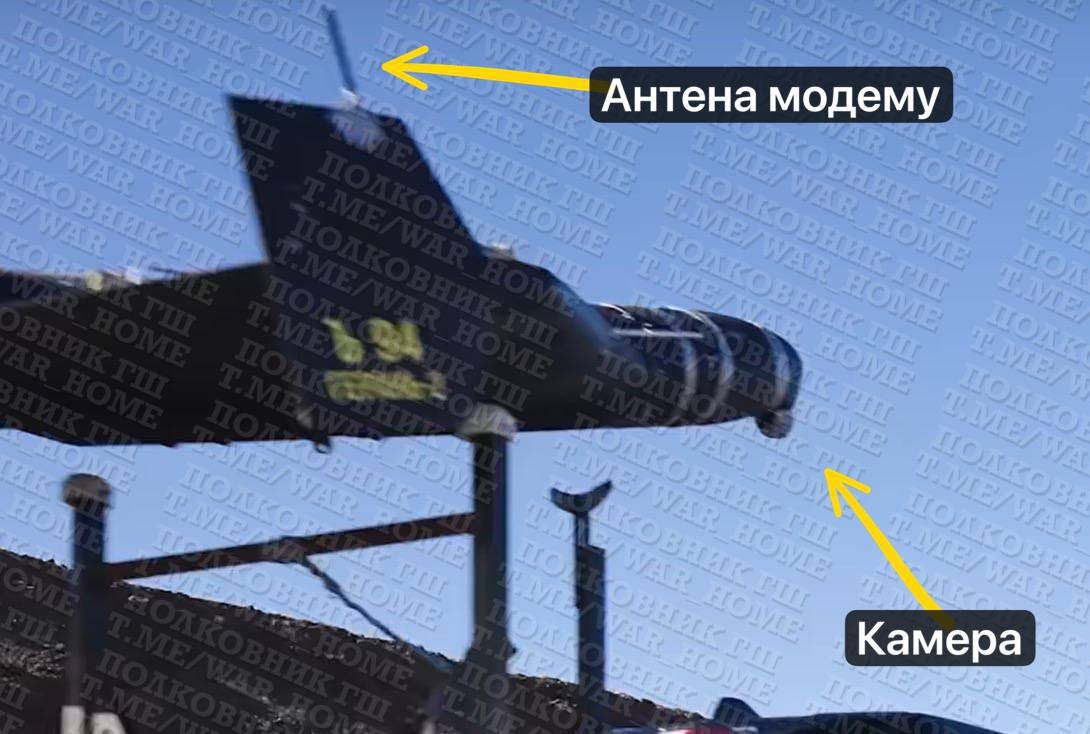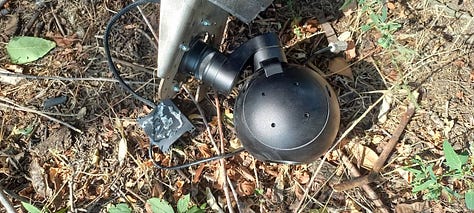Note: This post expands upon my recent post covering Ukraine’s unveiling of the Russian Geran-3:
Ukraine Lifts Veil On Russia's Turbojet-Powered Geran-3
Note: The following text was originally posted on my X/Twitter account.
According to Ukrainian military intelligence, Russia’s Geran-3, which is a Russian turbojet-powered version/derivative of the ordinarily propeller-driven Iranian-origin Shahed-136/Geran-2/Garpiya strike drone, can be equipped with a nose-mounted electro-optical sensor/camera in a configuration that also features a line-of-sight radio frequency datalink so as to allow real-time human monitoring, if not real-time human control. According to Ukrainian sources, propeller-driven Russian-built Ъ-series Geran-2 airframes exist in this configuration. The turbojet-powered Geran-3 is so far associated with У-series airframes. A recent moderate definition video recorded in Ukraine that captures what appears to be a Geran-3 in flight, notably does not offer any indication of the presence of a nose-mounted camera/sensor in the Ъ-series Geran-2 configuration for which imagery is available. The video definition is inadequate to discern the presence of an antenna on either the port/left or the starboard/right wing stabilizer of the turbojet-powered Geran-3.

As the following images of what Ukrainian sources characterize as a Ъ-series Geran-2 indicate, Russia appears to be using a very rudimentary commercial-off-the-shelf electro-optical sensor. This is not a military-grade electro-optical system of the likes found on most reusable ISR drones. Then again, both the Geran-2 and Geran-3 are employed as single-use uncrewed aircraft-turned-strike munitions for which a high-end electro-optical sensor is an irrational and unaffordable luxury.



The Ukrainian source of the above images claims that the Geran-2 airframe in question was downed some 130 kilometers from the frontlines. Not only would the Geran-2 airframe in question require a radio frequency datalink to facilitate real-time human supervision, if not real-time human control, but an aerial repeater/radio relay would have been used, given the claimed distance from the frontline, which far exceeds the line-of-sight range of a ground-based radio antenna in Russian-controlled territory. That said, it is possible that sensor-equipped Geran-3 airframes are intended for use against fairly proximate targets, such as the Ukrainian city of Dnipro, with the significantly higher cruise and maximum speed being intended to increase the probability of penetrating Ukrainian air defences. A target in the Dnipro metropolitan area would remain within the maximum practical coverage of an aerial radio relay/repeater.
It remains to be seen whether turbojet-powered Geran-3 aiframes used against such fairly proximate targets will be used in a higher-payload, reduced-range configuration. The propeller-driven Geran-2 airframes built at the Alabuga, Tatarstan production line can be equipped with either a 50-kilogram or a 90-kilogram warhead, with the latter configuration coming with a significant reduction in maximum range. The propeller-driven Garpiya aiframes built at the Izhevsk, Udmurtia production line have been equipped with either one or two 50-kilogram warheads. It is possible that a Geran-3 used to attack fairly proximate targets, such as those in the Dnipro metropolitan, area will be equipped with a heavier warhead.
While the turbojet-powered Geran-3 may exist in a configuration that is equipped with a nose-mounted electro-optical, it bears emphasis that the maximum range of around 1000 kilometers claimed by Ukrainian military intelligence suggests a design with a range-payload optimization that is not primarily intended for use against targets located closer to the frontlines/international border. Unless Russia employs multiple aerial radio relays/repeaters en route, which is a decidedly haphazard approach given the effectiveness of Ukrainian air defences and electronic warfare capabilities, the human-in-the-loop mode of operation will only be practical over, at most, a maximum range of 200-300 kilometers. Beyond such distances, Russia will either have to use a satellite communication (SATCOM), perhaps the Starlink low Earth orbit (LEO) SATCOM service, or use the cellular data service offered by Ukraine’s mobile phone network.


